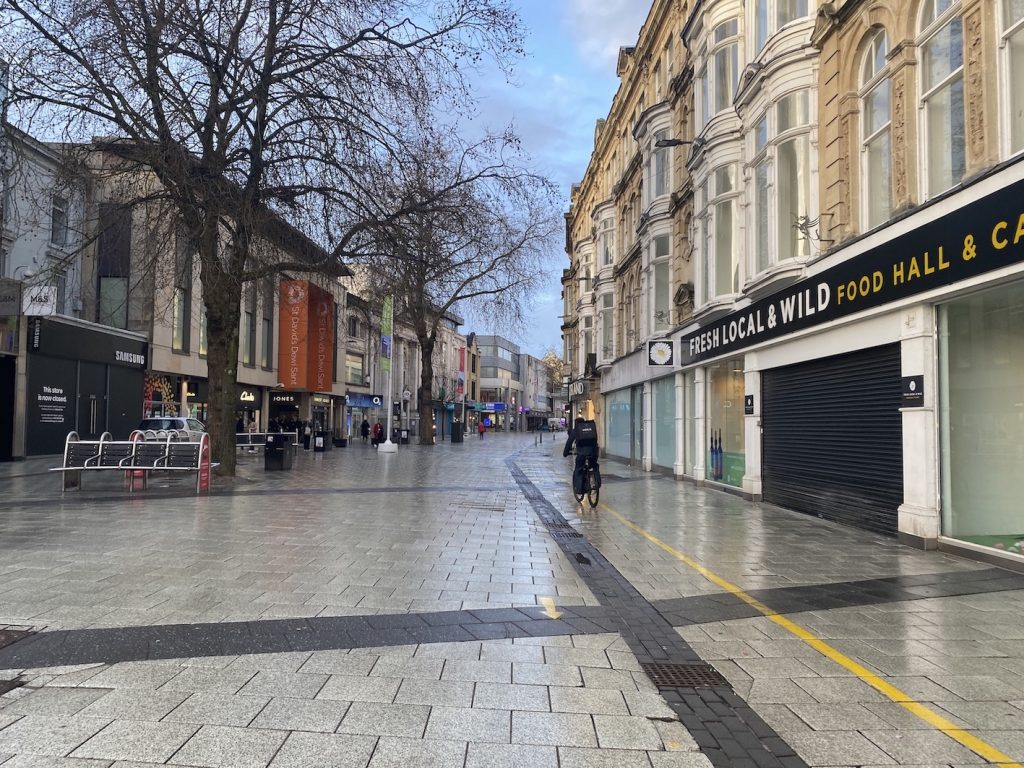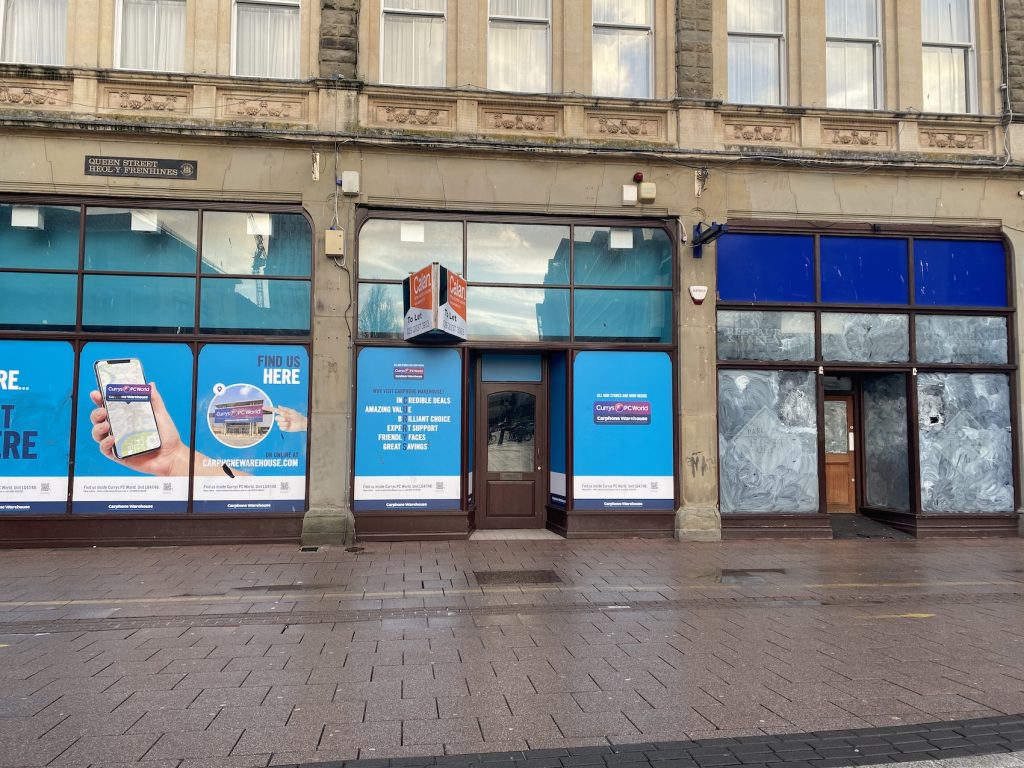The closure of Topshop and online shopping have hit Queen Street
CURRENTLY, 15 percent of shops on Cardiff Queen Street are empty, as the pandemic has accelerated the decline of the high street.
Queen Street is in the Cathays ward of Cardiff, which currently has 146 empty stores (shops, restaurants and cafes), the highest of any ward in Cardiff.
Today the street, which was pedestrianised in 1974, has 84 stores, 13 of which are empty and two more are closing down soon.
Following the decision by Topshop not to reopen after the second lockdown, many people who used to visit Queen Street have decided to shop online.

Burhan Uddin, 42, from Gabalfa, said: “I have not been to town or Queen Street for years and have absolutely no need to. Everything I need I can get online these days including food, clothing, banking and everything in between.”
“If we learn from the mistakes of cities like Newport, we can avoid the problems that they’ve had.”
In May 2021, the council created a report called Greener, Fairer, Stronger which outlined its strategy to recover the city centre after the pandemic.
The report was open for consultation from Cardiff residents and business owners.
Considering the responses, three weeks ago the council set out its five-year plan which focuses on nine key areas to improve the city centre.
Council Leader Huw Thomas said: “The Covid-19 pandemic had an extraordinary impact on city centres across the UK and indeed the world.
“In many ways it has forced us to consider those longer-term trends, which were already coming down the track, but have now been accelerated because of the pandemic.
“However, far from these trends sounding the death knell for city centres we feel they offer exciting opportunities to evolve. Cardiff’s city centre supports 70,000 jobs and is critical to the local, regional, and national economy.”

Mr Uddin said: “I agree with the plan and the theory is very good. But I don’t think it will be successful at all if I’m really honest.
“People are already avoiding the city centre in their masses and it’s looking like it might turn into a ghost town like other cities in the country.”
On the five-year plan, Mr Uddin added: “It is not an option for most people to use public transport or cycle in and around town so everyday people are just going to suffer more and more. Their current public transport system is not good enough neither is the road’s infrastructure so how are they going to be able to improve on this.
“If we learn from the mistakes of cities like Newport, we can avoid the problems that they’ve had.”
On empty units, the council states its plan to: “Develop proposals for meanwhile uses and incubation spaces, providing a dynamic approach to ensuring that empty units, retail and office spaces are used productively.”
On the east side of Queen Street are Rig Out, an outdoor clothing store, and Fabrik London, a womenswear shop, which are both closing down soon.
Darren Burnett, of Splott, said: “The pandemic may have hit hard but high streets have been in decline for some time now.
“To survive they need to offer something you will not get online. This could be an experience, something niche or a personal touch but the fact is high streets will need to change to stay relevant.
“The pertinent question may be what do we want high streets to look like in the future. A mixture of shops, housing and services maybe? Who knows. But change will not necessarily be a bad thing.”
Councillor Russel Goodway, Cabinet Member for Investment and Development said: “There is no doubt that the pandemic has had a massive impact on trade, but what we need to focus on now is how the city centre recovers.”



